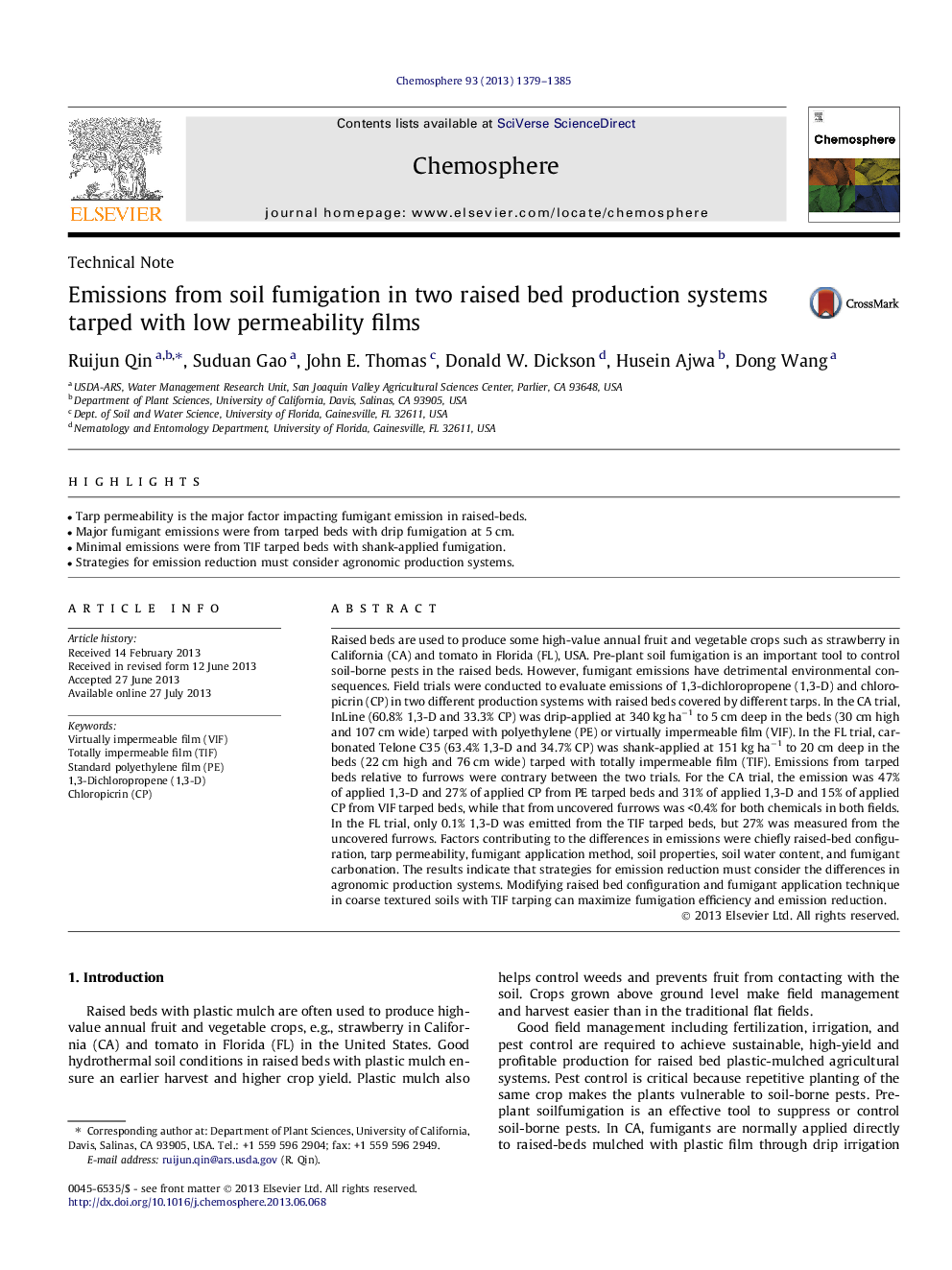| کد مقاله | کد نشریه | سال انتشار | مقاله انگلیسی | نسخه تمام متن |
|---|---|---|---|---|
| 4409196 | 1307468 | 2013 | 7 صفحه PDF | دانلود رایگان |

• Tarp permeability is the major factor impacting fumigant emission in raised-beds.
• Major fumigant emissions were from tarped beds with drip fumigation at 5 cm.
• Minimal emissions were from TIF tarped beds with shank-applied fumigation.
• Strategies for emission reduction must consider agronomic production systems.
Raised beds are used to produce some high-value annual fruit and vegetable crops such as strawberry in California (CA) and tomato in Florida (FL), USA. Pre-plant soil fumigation is an important tool to control soil-borne pests in the raised beds. However, fumigant emissions have detrimental environmental consequences. Field trials were conducted to evaluate emissions of 1,3-dichloropropene (1,3-D) and chloropicrin (CP) in two different production systems with raised beds covered by different tarps. In the CA trial, InLine (60.8% 1,3-D and 33.3% CP) was drip-applied at 340 kg ha−1 to 5 cm deep in the beds (30 cm high and 107 cm wide) tarped with polyethylene (PE) or virtually impermeable film (VIF). In the FL trial, carbonated Telone C35 (63.4% 1,3-D and 34.7% CP) was shank-applied at 151 kg ha−1 to 20 cm deep in the beds (22 cm high and 76 cm wide) tarped with totally impermeable film (TIF). Emissions from tarped beds relative to furrows were contrary between the two trials. For the CA trial, the emission was 47% of applied 1,3-D and 27% of applied CP from PE tarped beds and 31% of applied 1,3-D and 15% of applied CP from VIF tarped beds, while that from uncovered furrows was <0.4% for both chemicals in both fields. In the FL trial, only 0.1% 1,3-D was emitted from the TIF tarped beds, but 27% was measured from the uncovered furrows. Factors contributing to the differences in emissions were chiefly raised-bed configuration, tarp permeability, fumigant application method, soil properties, soil water content, and fumigant carbonation. The results indicate that strategies for emission reduction must consider the differences in agronomic production systems. Modifying raised bed configuration and fumigant application technique in coarse textured soils with TIF tarping can maximize fumigation efficiency and emission reduction.
Journal: Chemosphere - Volume 93, Issue 7, October 2013, Pages 1379–1385